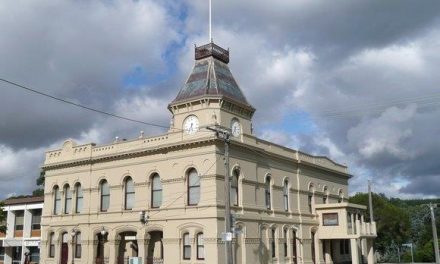There have been an unusually large number of power disruptions in the local area in recent months. Areas that have been experiencing outages include Daylesford, Glenlyon, Hepburn Springs, Lyonville, Barkstead, Gordon, Blampied, Dean, Creswick, Sulky, Smeaton and surrounding areas.
Some of these outages have been due to extreme weather events during the past 12 months. These events have contributed to more outages than usual occurring on the network. These events can bring down trees and damage infrastructure, which can lead to outages. Other outages which are not related to adverse conditions may be a result of animals, vegetation or newly installed safety equipment.

Powercor crews have completed a detailed powerline inspection of more than 800 kilometres of powerlines in the region and identified potential issues that could lead to future outages. The work has taken time because many of these lines are located in heavily vegetated and difficult-to-access areas.
Patrols have identified damage to equipment, likely caused by strong winds, lightning and vegetation coming in contact with power infrastructure. They are replacing damaged equipment, installing protection to reduce outages caused by animals and introducing technology to reduce the likelihood of bark contacting powerlines.
Two summers of La Nina weather patterns have encouraged growth of vegetation. Faster than expected regrowth has put pressure on the year-round cutting program which attempts to ensure that powerlines are clear of any vegetation in all weather conditions.
In 2019, Powercor began a program of installing Rapid Earth Fault Current Limiter (REFCL) devices in the area as part of the response to the Victorian Bushfires Royal Commission. REFCLs can detect phase-to-earth faults and cancel the voltage on the fault line within milliseconds of detecting it and limit the voltage of the fault to below the point where it can start a fire. The program required planned outages in the local area while the devices were installed.
REFCLs do not cause faults. They are safety devices that help respond to faults or other problems on the network. During fire season, the REFCLs and other network safety devices operate in more sensitive setting modes to further reduce the risk of fires.
Outages during the fire season may take longer to restore as crews are required to patrol the lines after each fault. These patrols are critical in ensuring that power can safely be restored.
The fire season declared by the CFA is currently still in place. Once the fire season is over, the network safety devices will operate in a less sensitive setting and so may activate less often in response to faults.
The Australian Energy Regulator (AER) sets reliability targets for electricity networks. Powercor and CitiPower are expected to meet or exceed these targets. In rural areas, the 2021 targets were an average of 4.39 momentary outages (less than three minutes) per year per customer and 2.02 supply interruptions (more than 3 minutes) per year. The target for total unplanned time off supply was 4 hours.
If power supply companies fail to reach Guaranteed Service Levels (GSLs), customers are entitled to compensation. If unplanned interruptions exceed 18 hours per year, customers are entitled to $130 compensation. For more than 60 hours, the compensation is $380. These penalties are automatically credited by the electricity retailer to the customer account.
Powercor offers advice to customers on how to prepare, respond and recover from power outages. See the advice here.
If you find that power outages are very inconvenient or you are concerned about losing power because of loss of refrigeration or home entertainment or because you depend on internet or medical equipment, you can install a generator for your home. Fell’s Electrical in Daylesford has installed numerous systems this year perhaps because people are frustrated with frequent power outages. They advise that a generator which will maintain base power for an average home (5kW) including a transfer switch (which separates the household supply from the power network temporarily during an outage) costs about $6000 installed. Depending on requirements, systems typically range from $3,500 to $10,000.
If you already have a solar system installed, you can add a storage battery which will automatically provide power in the event of a failure. Battery costs are typically $1,000 per kW installed. A 5kWh battery would cost about $5,000 installed. Solar panel systems including panels, inverters and batteries range from $10,000 to $30,000.
Related Stories:





